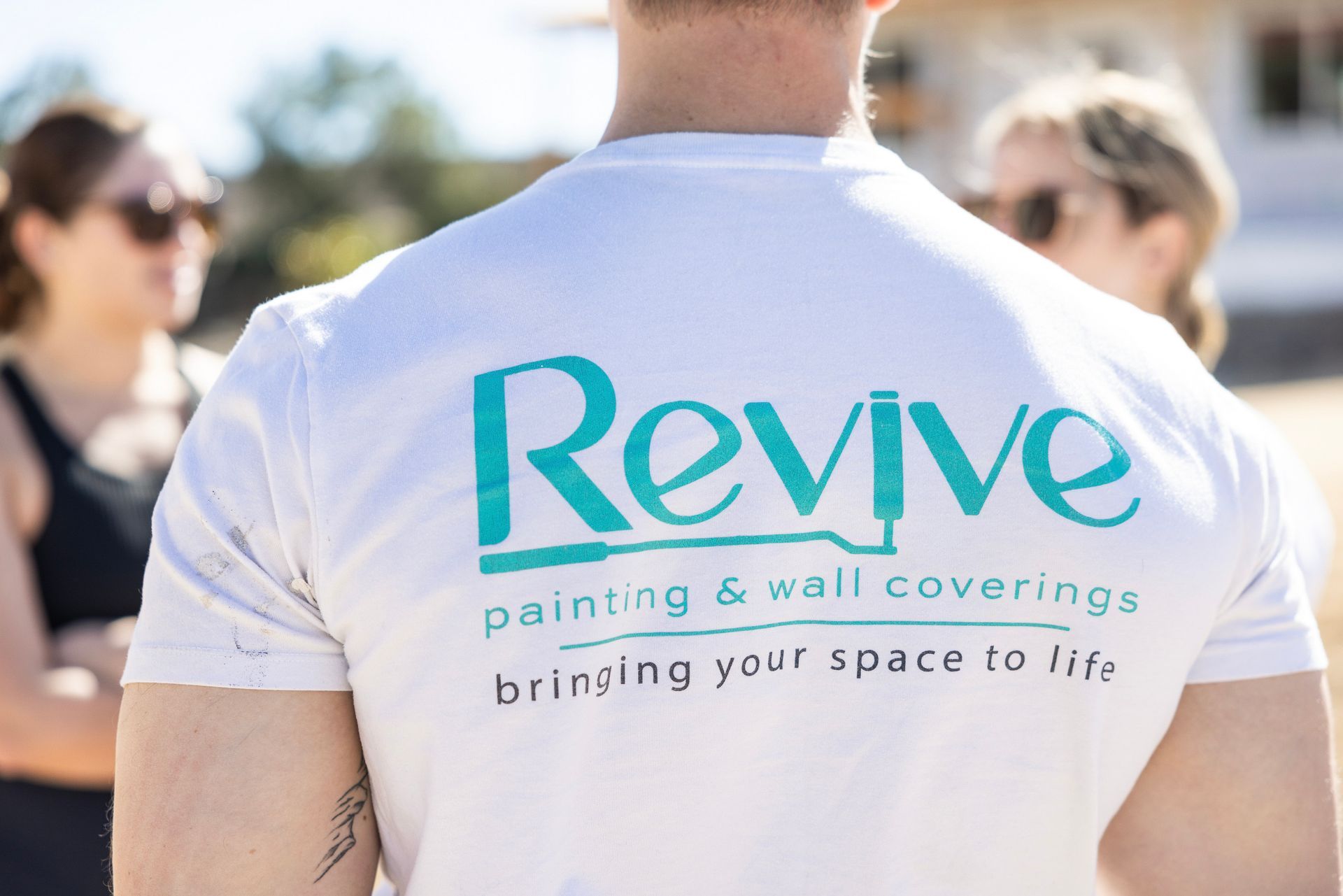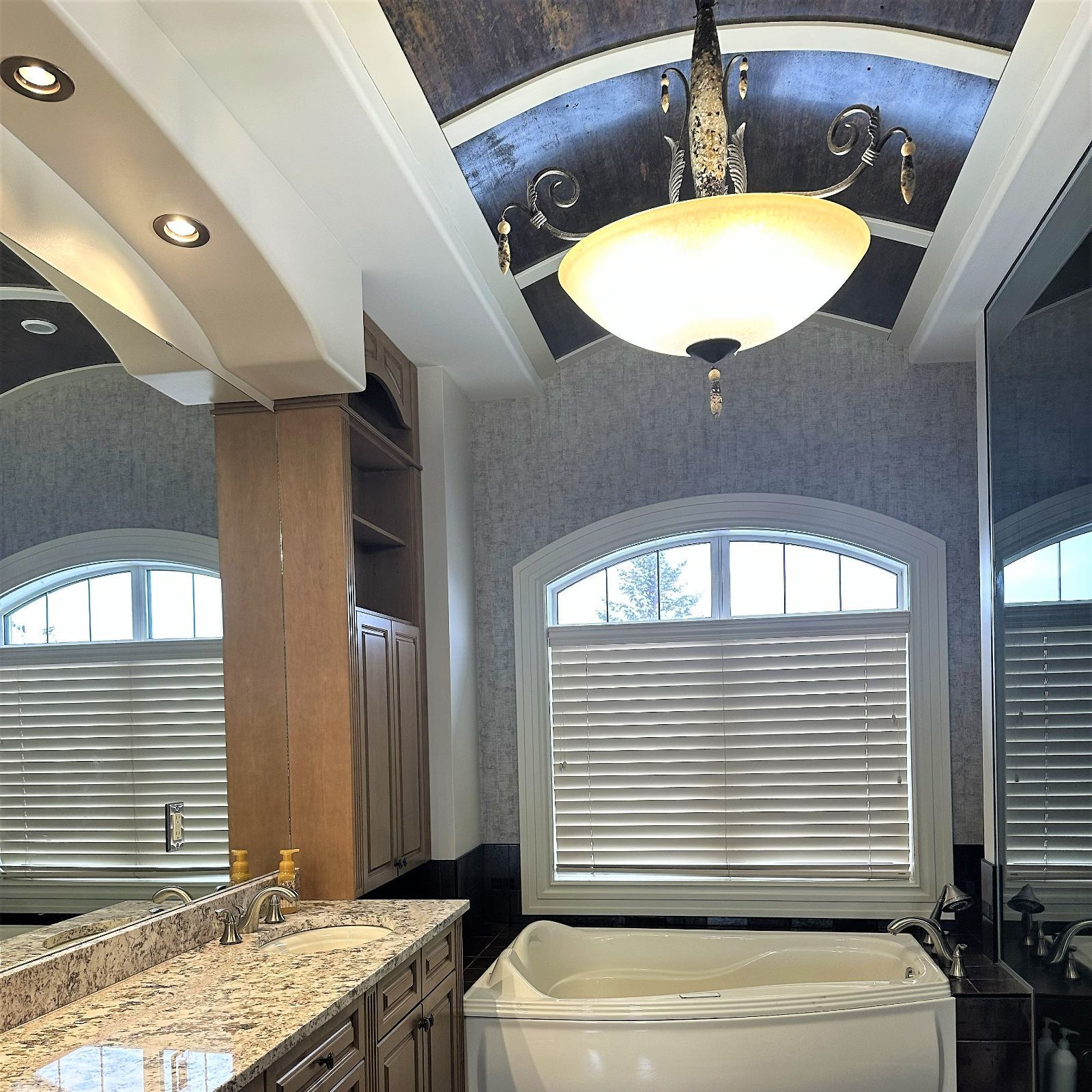Spraying Paint vs Rolling: What's Better?
Paint sprayers might look like the obvious choice to save time, but the decision needs more thought. These machines start at $300, and daily rentals run between $65-$100. My experience as a commercial painting contractor in Saskatoon shows clients struggle with this choice. They're surprised to learn sprayers use about 25% more paint than regular rollers. Sure, sprayers are fast, but speed isn't everything.
The cost difference between spray and rolling methods hits hard upfront. A complete roller setup with frame, covers, brushes and tray costs just $20 to $40. Paint sprayers need much more investment. The speed advantage can be worth it though - projects that take several days with rollers wrap up in just two days with sprayers. The catch? Sprayers can burn through 33% more paint than rollers. Paint waste adds up too. You'll need about one liter of paint just to fill a 50-foot hose and prime the spraying machine.
Let me share what I've learned about paint sprayers versus rollers from my years in the painting business. We'll look at speed, costs, finish quality, ease of use, and environmental effects. This information will help you get professional results whether you're painting one room or your entire house. You won't waste money or end up frustrated if you understand what each method can and can't do.
When to Use a Paint Sprayer vs Roller
The choice between spray painting and rolling isn't just about what you like—it's about picking the right tool for your job. My experience running a commercial painting business in Saskatoon has taught me that knowing when to use each method saves time, money, and headaches.
Sprayer for large, open, or textured areas
Paint sprayers really shine when you're working with big surfaces or tricky textures. These tools are perfect for exterior jobs like siding, fences, and large walls. They work amazingly well on textured surfaces where rollers just can't do the job—think popcorn ceilings, brick walls, stucco exteriors, and detailed trim work like crown molding or built-up baseboards.
Sprayers prevent paint from pooling and dripping on complex textures, unlike brushes or rollers. They're also the quickest way to handle projects that need a precise finish. To name just one example, see how a new home or empty room needs minimal masking—you just cover plumbing stub-outs, electrical boxes, and windows.
Most pros use sprayers for new construction or empty houses. A sprayer can finish in two days what might take several days with rollers, which is a big deal for large projects. Just remember to hold the spray gun about 12 inches from the surface and keep it perpendicular for the best results.
Roller for small, detailed, or occupied spaces
Rollers are your best bet for occupied homes and smaller projects. Living spaces need too much masking and taping to protect from overspray. Rollers give you flexibility—you can stop work, cover your stuff, and start again later without a lengthy setup.
You'll get better control and consistency with rollers, especially on surfaces that aren't spotless. The original coat goes on thicker, so you usually need just two coats instead of the extra ones spraying might require. On top of that, prep work is much simpler—you mainly protect trim and floors rather than everything nearby.
Small projects are cheaper with rollers. A good roller setup costs less than CAD 69.67, way below even basic sprayers. Rollers are also more paint-efficient—sprayers use about 25% more paint.
How room conditions affect your choice
Your environment plays a huge role in which method works best. Temperature and humidity affect how spray paint dries and looks. Paint dries too fast in direct sunlight, which can cause lap marks and blisters. Starting spray projects on the shaded side of the house usually works better.
Each method needs different prep work. Spraying an occupied space means covering everything you don't want painted—furniture, floors, trim, and nearby walls all need protection. Even heavy drop cloths can move from the spray force, so everything needs secure fastening.
The distance between sprayer and surface matters. Spray too far and you get patchy coverage; too close and you'll see runs and buildup. These factors make rolling the smarter choice for most interior projects in lived-in homes, even if it takes longer.
My years in Saskatoon have shown that mixing techniques often works best. Many pros use "back rolling"—they spray first for speed, then roll over wet paint right away. This ensures good adhesion and creates a texture that makes future touch-ups easier.
Speed and Setup Time: Which Is Really Faster?
Raw speed numbers don't tell the whole story when comparing paint sprayers to rollers. Professional painters can cover 1,000-2,000 square feet per hour with an airless sprayer. Rollers top out at 300-400 square feet per hour. This huge difference makes spray equipment look like the obvious choice. Speed includes more than just how fast you can apply paint.
Sprayer application speed vs prep time
Spraying paint is way faster than rolling - at least four times faster according to studies. This advantage becomes crystal clear on large-scale projects. Rollers just can't match sprayers when covering areas over 1,000 square feet. Even in average-sized rooms around 100 square meters, spray equipment finishes the job faster.
All the same, this speed comes with a catch. You really need to mask and protect everything that shouldn't get paint on it before spraying. Masking takes much longer compared to roller prep work. Our commercial painting company in Saskatoon has seen masking jobs stretch into several hours. Some complex projects take days. Small projects might not even save time because masking takes so long.
Roller setup and pause flexibility
Roller painting has a hidden advantage that people rarely talk about - flexibility. You can set up a roller in under a minute. Just pour paint in a tray, lay down drop cloths and start painting. Spray equipment needs assembly, testing, pressure adjustments and careful masking before you can begin.
Rollers let you take breaks easily, which is a big plus. When you need to pause, just wrap your roller in plastic to keep it from drying. You can pick up right where you left off without any issues. Sprayers don't work that way. Once paint fills the system, you're stuck until you finish. Paint left in the sprayer's hose or gun will clog everything up if you don't clean it right away.
Cleanup time comparison
Cleanup is another time factor that varies between these methods. Roller cleanup is straightforward - wash with soap and water for water-based paints until the water runs clear. This takes some work but it's easier than dealing with a sprayer.
Sprayers need a deep clean after each use. You'll have to take everything apart and flush the whole system. This wastes paint too - about a liter just to fill a 50-foot hose and prime the machine. Professional painters follow strict maintenance steps. They lubricate pistons, flush with the right solvents, and use pump-saving solutions to stop rust and protect internal parts.
The project's size and situation ended up determining which method saves more time. Rolling works faster for small areas when you add up all the factors. Spraying saves time on big surfaces that don't need much masking. You'll need to think about prep work, flexibility, and cleanup time - not just how fast the paint goes on.
Finish Quality and Paint Coverage
Your painted surface's look and feel depends a lot on how you apply the paint. My experience running a commercial painting company in Saskatoon has taught me that clients don't realize how much the application technique can affect the final look. Both methods can give great results in the right situations, but spray paint vs roller finishes have some big differences.
Smooth finish with sprayers
Paint sprayers are great at creating smooth, even finishes without visible marks. They usually give better, more professional results than brushes and rollers on smooth surfaces like trim, doors, and cabinets. This becomes really obvious with shaker-style doors and flat, rectangular profiles where rollers might leave unwanted texture.
The science behind this better finish comes from how sprayers turn paint into a fine mist. This lets the coating spread evenly across the surface - as long as you use the right tip size and pressure settings. The tiny paint particles can reach small crevices and uneven spots better than any roller. Some pros use HVLP (High Volume Low Pressure) sprayers to get automotive-quality results on furniture, cabinets, and other detailed projects.
A sprayed finish will naturally smooth out to create surfaces "smooth as a baby's bottom" if you use proper technique. Keep the sprayer 6-12 inches from the surface and move in smooth, overlapping strokes. Professional sprayers lay down thinner, more consistent coats that dry evenly. This reduces visible lap marks and creates a finish that looks like factory-applied coating.
Texture and thickness with rollers
Rollers beat sprayers at controlling texture and coating thickness, even though sprayers give smoother results. They work paint into uneven surfaces better than sprayers, which only force paint one way. This makes rollers perfect to use on rough surfaces like textured walls or ceilings, since the rolling motion pushes paint into every surface variation.
Roller texture does more than just look good. The subtle texture scatters light evenly across the surface and hides small imperfections, flatness variations, and blemishes. So that slight texture from rollers can actually help in many homes and commercial spaces.
Your choice of roller cover makes a big difference in the final texture. Match the nap length (the fiber thickness on the roller cover) to your surface's roughness. Shorter naps (¼-inch) give smoother finishes on metal, trim and cabinet doors. Longer naps (¾-1 inch) work better on rough surfaces like stucco or brick. You can also get specialty rollers with patterns or textured surfaces to create decorative effects that look like fabric, stone, or stucco.
Back rolling and hybrid techniques
Professional painters often combine both methods to get the best results. Back rolling is the most common hybrid technique. You follow spray application with a roller pass while the paint's still wet. This gives you speed while fixing any sprayer limitations.
Back rolling does three important things: it makes texture uniform, improves adhesion, and fixes surface variations. The roller creates an even texture that hides flaws, pushes paint deeper for better sticking, and flattens raised fibers on surfaces like new drywall. Without it, spray-only applications can be hard to touch up later because matching that smooth, non-textured surface becomes almost impossible.
This technique works especially well when priming new construction drywall. Sprayers put paint on fast but don't help it penetrate or stick better - they just coat the surface. Back rolling makes sure the coating bonds properly with the surface and prevents future separation around gaps, cracks, and pinholes as temperatures change.
Cost, Paint Usage, and Waste
The financial side of painting methods reveals surprising facts about immediate and future costs. Many first-time painters get caught off guard by focusing only on how fast they can apply the paint.
Upfront equipment costs
The price gap between sprayers and rollers is huge. A good roller setup with frame, covers, brush, and tray costs less than CAD 69.67. This makes it a budget-friendly choice for occasional painters. On the flip side, basic paint sprayers start at CAD 418.01, while professional equipment can cost anywhere from CAD 1,393.36 to CAD 6,966.80. Renting offers a middle ground option that costs between CAD 90.57 and CAD 139.34 per day. Yes, it is clear why rollers become the smart choice for single-room projects or occasional painting needs.
Paint consumption: spray vs rolling paint
Paint makes up a big part of project costs, and each method uses different amounts. Sprayers use 25-33% more paint than rollers because of overspray and atomization. Paint guns break down paint into tiny droplets, which leads to thinner coverage and more scattered application. Rollers put almost every drop right on the surface, but sprayers lose much paint during application. Some sprayer types work better than others. HVLP (High Volume Low Pressure) systems can transfer up to 65% of the paint effectively, while airless sprayers manage only 45-60%.
Waste and environmental impact
Rolling paint often proves better for the environment. This method creates less air pollution and waste compared to spraying. Rollers produce few VOC emissions during use, but spraying creates tiny paint particles that can pollute the air. Overspray poses extra environmental risks and might contaminate soil or water if not contained properly.
Using less paint saves money and helps protect the environment. Smart practices help cut waste whatever method you choose. These include measuring correctly before buying, using paint keys instead of screwdrivers to open cans, and storing paint in dry areas.
Ease of Use, Safety, and Learning Curve
The success of DIY projects depends a lot on how you apply paint. Choosing between spray paint and rollers isn't just about cost and speed. You also need to think about how easy they are to use and how safe they are.
Beginner-friendly tools
Rollers give new painters a clear advantage. You can get good results with minimal training, and they're easier to control. The simple dip-and-roll method makes rollers perfect for beginners who don't have special skills. Sprayers need precise adjustments and settings that can be tough for newcomers. Most professional painters tell DIYers and homeowners to use rollers and leave sprayers to the pros. Rollers are forgiving, and you can fix mistakes easily without redoing the whole job.
Safety gear for spraying
Spray painting needs way more safety gear than rolling does. Rolling needs basic protection, but spray painting requires detailed safety measures against harmful particles and fumes. You'll need respirators with NIOSH-approved organic-vapor-removing cartridges because regular dust masks won't protect you from paint vapors. Safety goggles or face shields are a must with spray equipment. You also need full-body protection - coveralls, chemical-resistant gloves, and head coverings to keep paint particles off your skin. Good ventilation is crucial, so open windows and use fans to reduce risks during indoor spraying. This setup takes much more prep work than rolling does.
Common mistakes and how to avoid them
New spray painters often make technique errors. They struggle to keep the right distance from the surface - too close creates drips, too far leaves patchy coverage. Beginners often use too much pressure, which makes paint build up and drip. To reduce these problems, practice on scrap materials first. Poor preparation is another big issue - surfaces need proper cleaning and prep work to help paint stick better. Many pros suggest taking specific training courses for airless sprayers. These courses help you understand dangers like injection injuries that can happen if you don't handle high-pressure equipment correctly.
What to Choose
The choice between spray painting and rolling depends on your project's specific needs rather than picking one as the clear winner. My years as a commercial painting contractor have shown that project size, surface texture, timeline, and budget all play significant roles in picking the right application method. Spray painters work faster for large, open areas and give incredibly smooth finishes on cabinets and trim. The downside? They cost more upfront and use more paint. Rollers give you better texture control, more flexibility, and cost nowhere near as much to start with—perfect for smaller projects and occupied spaces.
Most pros, including myself, suggest mixing both approaches by back rolling. This helps us work faster while making sure the paint sticks properly and looks uniform. The sort of thing I love about rolling is how it wastes less paint and creates fewer emissions compared to spraying—something that matters more and more in today's green practices.
Safety needs careful attention, especially if you're doing it yourself. Rollers need basic safety gear, but spray painting requires detailed safety measures like proper respirators, eye protection, and good ventilation. First-time painters usually find rollers easier to learn and less likely to cause problems. In spite of that, both methods give great results with the right technique and prep work.
Getting that perfect finish isn't just about picking the right tools—it's knowing exactly when and how to use them. Professional results take real expertise, which is why many Saskatoon property owners end up calling in the pros instead of tackling these challenges alone. If the technical side of your painting project feels overwhelming, Use Revive Painting & Wallpaper delivers results that last. We bring decades of hands-on experience to every job, choosing the best method for your surfaces instead of using a one-size-fits-all approach.



